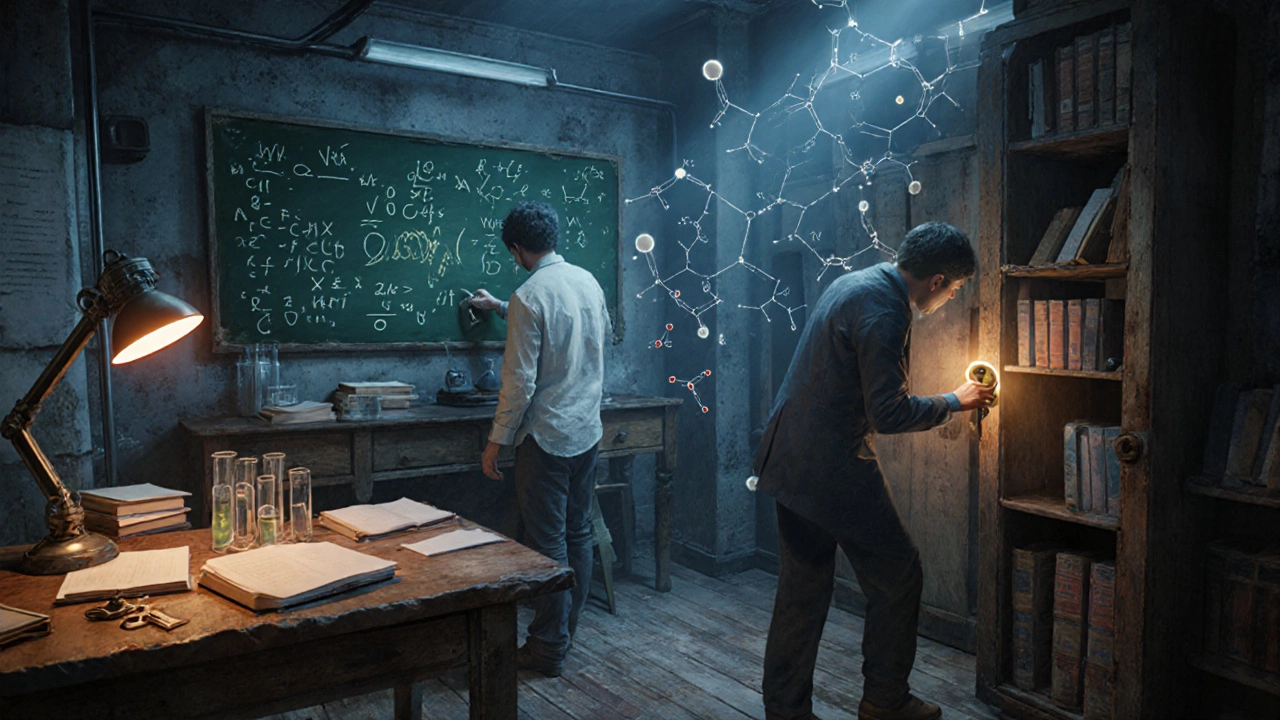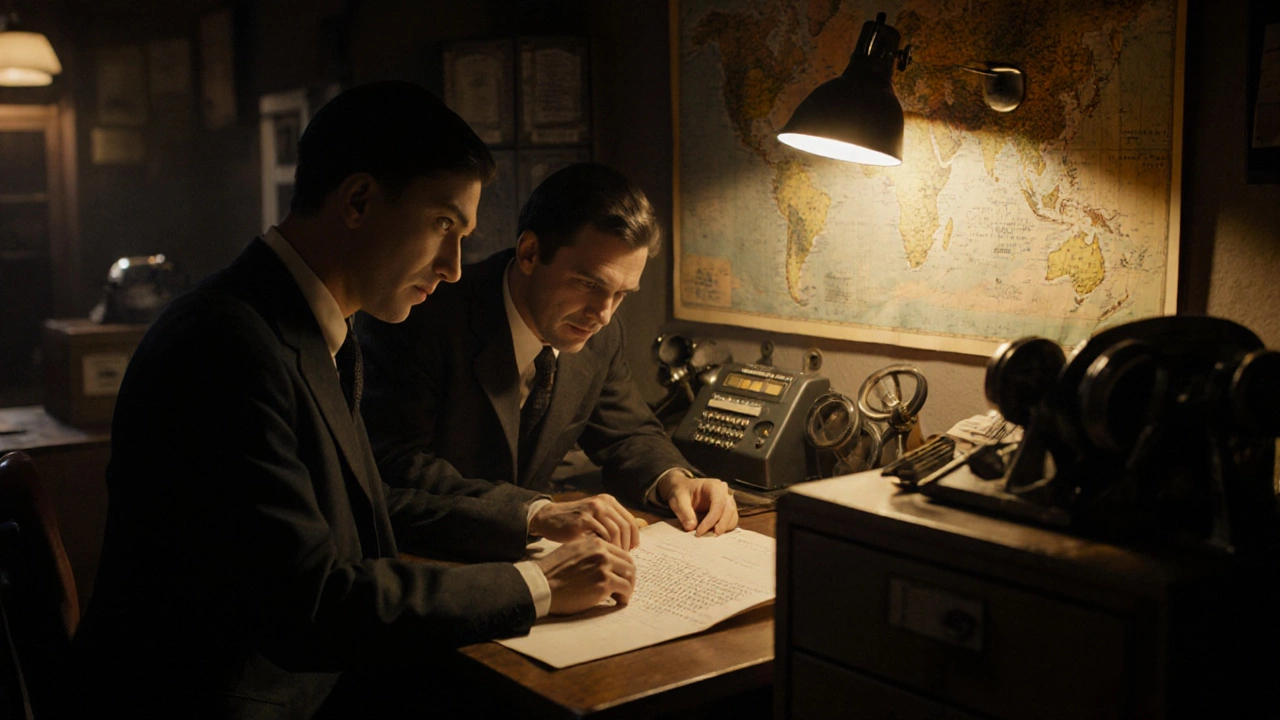Most escape rooms are designed for groups of 4 to 6 people. So when you show up with just two, you might feel like you’re walking into a trap. But here’s the truth: two people can absolutely beat an escape room-and sometimes, they do it faster than bigger teams. It’s not about luck. It’s about strategy, communication, and knowing how to use your limited numbers to your advantage.
Why Two People Can Win
Bigger teams don’t always mean better results. In fact, groups of five or more often get stuck because too many people are trying to solve the same puzzle at once. Someone grabs a key, someone else tries to open a lock, another person reads a clue out loud-everyone’s talking, no one’s listening. That’s called social loafing. It’s not laziness. It’s just how human brains work in crowds. With two people, there’s no room for that. You both have to stay focused. You can’t afford to split up unless you plan it perfectly. And because you’re a small team, you notice details faster. One person sees a symbol on the wall. The other spots the same symbol hidden in a book. You connect them before the bigger teams even finish reading the instructions. Escape room designers know this. That’s why more operators now offer duo-specific rooms. These rooms are built for two. Puzzles are layered, not stacked. Clues are spaced out. There’s no single lock that needs three people to turn at once. You’re not fighting the room-you’re working with it.What Makes a Room Work for Two
Not every escape room is built for a pair. Some still rely on physical tasks-like moving heavy objects, pulling levers simultaneously, or searching multiple rooms at once. These are the ones to avoid if you’re just two. Look for rooms that focus on:- Logic puzzles (codes, ciphers, pattern matching)
- Hidden object searches with clear visual links
- Multi-step riddles that require one person to hold information while the other acts
- Time-based triggers that reward coordination, not strength
How to Communicate Better Than Everyone Else
The biggest mistake two-person teams make? Assuming they’re on the same page. One person finds a key. They say, “I got it.” Then they go to the next door. The other person is still staring at a wall covered in numbers. Now you’re both stuck. You didn’t share context. You didn’t explain what you saw, where you found it, or what you think it means. Good communication isn’t just talking. It’s structured sharing. Try this:- Assign roles before you start. One person becomes the Observer-they scan the room, take mental notes, describe everything they see. The other becomes the Doer-they handle locks, move objects, test combinations.
- Use a simple code. Say “Red” if you find something red. “Symbol” if it’s a shape. “Number” if it’s digits. No long explanations. Just tags.
- Check in every 90 seconds. “What do you have?” “What’s blocking you?” No judgment. Just facts.

What to Avoid
Here’s what kills a duo team:- Trying to do everything at once. If you both rush to the same puzzle, you’ll block each other.
- Ignoring clues because they seem “too easy.” Sometimes the simplest clue is the one that unlocks the next step.
- Getting frustrated and going silent. Silence doesn’t help. Talking through confusion does.
- Assuming you need help. Most escape rooms let you ask for hints. Use them. Don’t wait until you’re out of time.
Real Examples: Rooms That Work for Two
You don’t have to guess which rooms are duo-friendly. Here are three proven ones, based on real success rates from operators:| Room Name | Theme | Time Limit | Success Rate for Duos | Why It Works |
|---|---|---|---|---|
| Professor’s Notebook | Science Lab | 60 min | 78% | Puzzles are sequential. Clues are visual and require pairing observation with logic. |
| The Last Letter | Mystery Mail | 60 min | 82% | One person deciphers coded letters; the other finds the envelope with the final key. |
| Phantom Radio | 1940s Spy | 75 min | 69% | Audio clues require one person to listen while the other matches symbols on a map. |

What If You Fail?
You didn’t make it out. You’re disappointed. That’s okay. Most escape rooms give you a debrief after. Pay attention. Ask: “What was the clue we missed?” “Where did we get stuck?” “Was there a step we skipped?” You’ll learn more from failing with two than succeeding with six. Because when you’re alone with your partner, you can’t hide. You see exactly where your communication broke down. You see how you reacted under pressure. You learn how to trust each other’s eyes, your instincts, your silence. And that’s the real win.Final Tip: Bring the Right Mindset
Don’t go in thinking you’re at a disadvantage. Go in thinking you’re at an advantage. Two people can move faster. Think clearer. Communicate sharper. You don’t need a crowd to solve a mystery. You just need two people who listen, stay calm, and pay attention. Escape rooms aren’t about size. They’re about focus. So grab your partner. Pick a duo-friendly room. Walk in. And beat it.Can you beat an escape room with just two people?
Yes, absolutely. Many escape rooms are designed for two players, especially those focused on logic, ciphers, and hidden clues. Success depends on communication, role分工, and choosing the right room-not the number of people.
Are escape rooms harder for two people?
Not necessarily. Bigger teams often slow down because of miscommunication or overlapping efforts. Two people can move faster and notice details others miss. The challenge is coordinating well, not having fewer hands.
What types of escape rooms work best for two?
Rooms with logic puzzles, coded messages, visual clues, and sequential steps work best. Avoid rooms that require heavy lifting, simultaneous actions, or physical tasks. Look for themes like spy missions, detective cases, or science labs.
How do we communicate better in a duo escape room?
Assign roles: one person observes and describes, the other acts. Use simple tags like “Red,” “Symbol,” or “Number.” Check in every 90 seconds. Avoid assumptions-always explain what you found and why you think it matters.
Should we ask for hints if we’re stuck?
Yes. Most escape rooms allow hints, and using them early saves time. Waiting until you’re out of time means you’ve already lost momentum. A well-timed hint can redirect your focus and unlock the next step.

